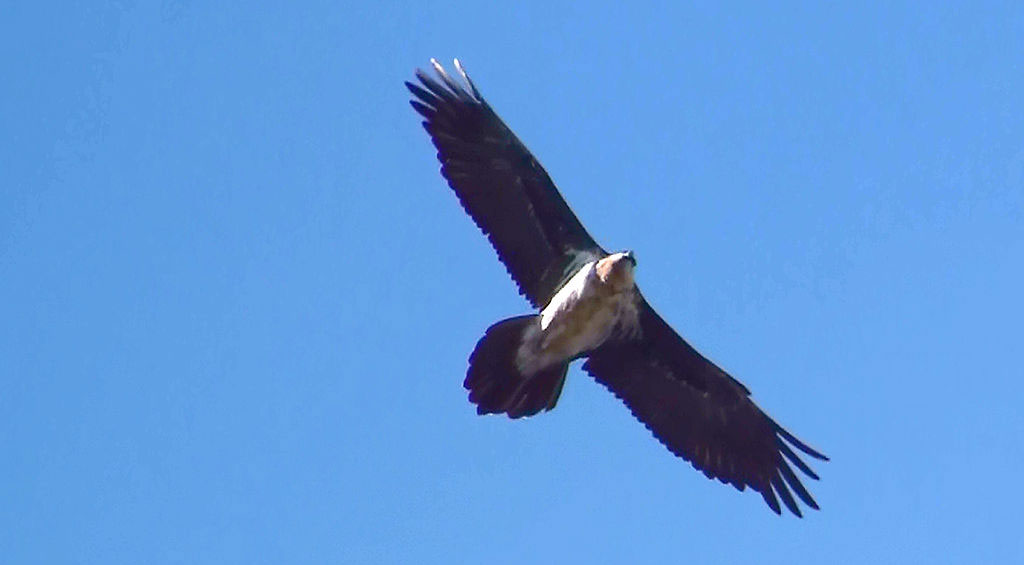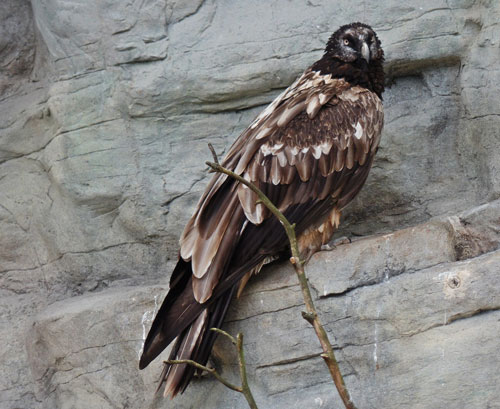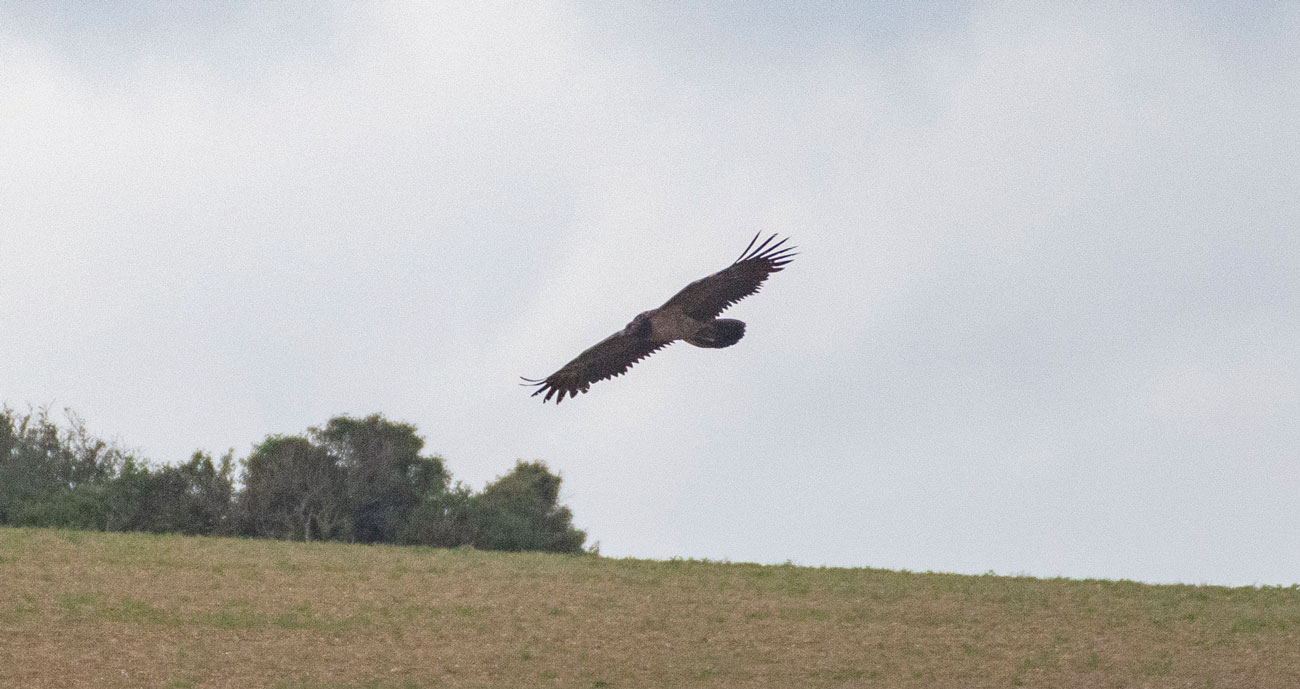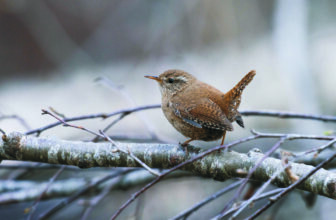
I can report a happy little – or should I say huge – Christmas story this month from the birding world.
Regular readers may recall the massive White-tailed Sea Eagle I wrote of last June following its brief visit to the Cranleigh area. A flying ‘barn door’ with a wingspan of over two metres. How could we miss it?
Well, something even bigger has been out there. Nature lovers will have seen documentaries from Africa featuring the antics of the Lammergeier, or Bearded Vulture. It drops bones from great heights in lonely rocky places and then devours the cracked remains with their rich marrow content. ‘Mind yer ‘ed, son!’
At up to 4ft 1inches long and over 9ft wide this species is a barn door and frame rolled into one. I have watched these spectacular birds gliding by as they menacingly and silently patrol the mountain cliff faces in Georgia’s snowy Caucasus Mountains.
So I was intrigued when one was reported in the mid-summer over the West Midlands. In fact it was almost expected. One had been spotted on a mini tour of Europe in previous weeks – visiting the Channel Islands, Holland and Belgium, and we were hopeful it would carry on going to England.
That very bird, identified by unique individual plumage which now included some distinctive missing tail feathers, had done exactly that! It settled for most of its stay in the South Yorkshire and Derbyshire Peak District. But seeing it would involve a boggy walk of many miles. I somehow resisted the urge.

Lammergeier, or Bearded Vulture (Gypaetus barbatus)
Then in the Autumn it started skiing off piste and began moving south. Birders and others among the unsuspecting public caught up with it as it stopped off for grub in Norfolk, Lincolnshire, Cambridgeshire, and Bedfordshire.
By now, two of its feathers – collected back up in the Peaks for genetic analysis – had confirmed suspicions that it was hatched in the wild last year following a re-introduction scheme in the French Alps.
Everyone was willing it to return safely to its family among the crags for the winter. But it was risking its life coming too close to people. Social media rumoured that a farmer had threatened to shoot it and the hungry bird was even observed in the Fens holding up the traffic as it fed on roadkill.
Next up was the unconfirmed news it had been seen going over a part of London so some pals and I were looking out for it up in the Surrey Hills from dawn the next morning, just in case. We had no joy but later learned we might have had a near miss. It had arrived over Tunbridge Wells. So close and yet so far…
Then I discovered it had left Kent and was now near Beachy Head. Photos showed it causing havoc among the local feathered regulars. It was too late in the day for me to get there but the good news was that it had been seen going to roost in a tree near Alfrington.
Well, it would have been rude not to go, wouldn’t it! So there was I in the dark before dawn next day. Time ticked by and as it got light the Lammergeier was detected in a large oak on the edge of a wood. Occasionally glimpses of its head showed the feather tufts, or ‘beard’, below its bill.

The East Sussex Lammergeier, © Ed Stubbs
Flocks of migrants, including Redwings, Fieldfares, and Chaffinches seen earlier in the week streaming through the Surrey Hills as I’d kept an eye out for it, were still arriving in off the sea and heading that way.
From the tree about half a mile away there was an occasional wing stretch or body movement and finally after a 17 hour roost and a two-and-a-half-hour wait for me the Lammergeier launched itself out and over the rolling fields of the Sussex Downs above the Seven Sisters Country Park.
The sleeping giant flapped low and lazily, pursued by a horde of unwelcoming Crows, Jackdaws and Magpies. Compared to a pursuing Buzzard the difference in size reminded me of a House Sparrow against a Rook.
After 10 minutes or so of exercise the Lammergeier, a female, gradually gained height and headed for Beachy Head and from there out to sea. Everyone thought it was finally going home but it returned from speck status for one final flypast before heading off high and away back to France.
Following months of exciting exploration miles from its natal area – something these youngsters are prone to do – it was heading home for Christmas.
I hope that those of you with families will shortly be reunited, if not for Christmas, then quickly after.
Twitter – @Crane_Spotter
Click here to see all of Robin Stride’s previous Crane Spotters.











